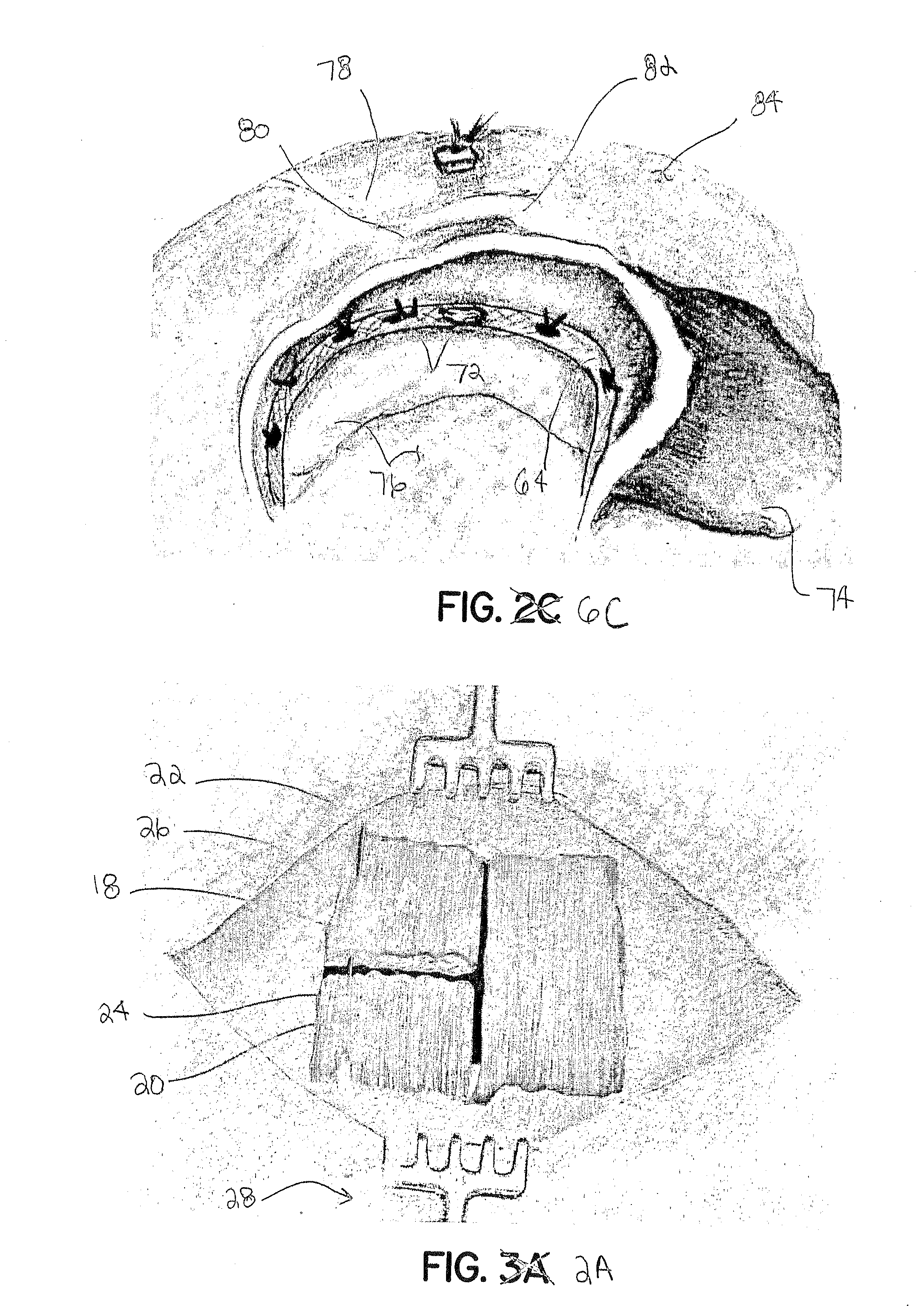A coupling device enabled by mechanical continuity of cellular scaffolding across tissue boundaries
a tissue and mechanical continuity technology, applied in the field of systems and methods for coupling tissue with other structures, can solve the problems the practical application of devices and scaffolds is thus far rather limited, and the fastening mechanism often fails, so as to reduce resistance, or drag, and increase friction coefficients. the effect of reducing stress concentration
- Summary
- Abstract
- Description
- Claims
- Application Information
AI Technical Summary
Benefits of technology
Problems solved by technology
Method used
Image
Examples
Embodiment Construction
[0042]The invention employs a myriad of very fine continuous filaments that serve both (1) as substrate (or ‘scaffold’) for new tissue formation within the substance of one or more existing living tissues, and (2) as tension members holding that existing living tissue either to another living tissue or to a prosthesis. The invention employs the substantial tissue-prosthetic interface areas that are useful in tissue culture “bioreactors” (customarily ex vivo, or outside the body, in tightly controlled environments), to achieve durable bonding with one or more living tissues that are, instead, in vivo (inside the body). More particularly, the invention uses a multiplicity of bundles of filaments, drawn through a region of the living tissue. This creates, of each individual bundle of filaments, an effective slender bioreactor extending longitudinally within part of the substance of those living tissues. This allows adjacent cellular elements, particularly fibroblasts, to ingrow and adh...
PUM
| Property | Measurement | Unit |
|---|---|---|
| diameter | aaaaa | aaaaa |
| length | aaaaa | aaaaa |
| diameter | aaaaa | aaaaa |
Abstract
Description
Claims
Application Information
 Login to View More
Login to View More - R&D
- Intellectual Property
- Life Sciences
- Materials
- Tech Scout
- Unparalleled Data Quality
- Higher Quality Content
- 60% Fewer Hallucinations
Browse by: Latest US Patents, China's latest patents, Technical Efficacy Thesaurus, Application Domain, Technology Topic, Popular Technical Reports.
© 2025 PatSnap. All rights reserved.Legal|Privacy policy|Modern Slavery Act Transparency Statement|Sitemap|About US| Contact US: help@patsnap.com



